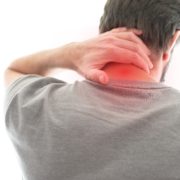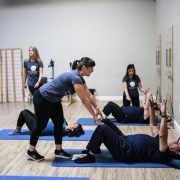Why Cortisone Shots Don’t Work for Sciatica
If you’ve ever suffered from sciatica – then you don’t need me to tell you how debilitating the condition can be.
From shooting and searing pain into your buttocks that can run all the way down to your foot – to numbness, tingling and loss of strength… sciatica has the ability to significantly impact your quality of life. What’s worse? It typically comes out of nowhere – making this condition even more frustrating to deal with.
It’s no wonder that a majority of people resort to “quick fixes” like cortisone shots – in hopes it will put an end to their back pain and sciatica suffering. According to the American Academy of Family Physicians (AAFP), epidural steroid injections (a type of cortisone shot) are among the most common interventions for chronic low back pain and sciatica. In a study published in The Spine Journal in 2015 – it was reported that approximately 50% of patients with sciatica opted for cortisone shots for pain relief as part of their treatment plan.
But just because cortisone shots for sciatica are popular and considered “standard” – it doesn’t mean they are best practice.
First of all – even if a cortisone shot “works” (almost 50% of the time they don’t) – the results are typically temporary. Only 20-30% of patients have been able to report sustained relief past a few month’s time. Everyone else reports anywhere from a few weeks to 3 months relief. The problem with the majority of people only experiencing temporary relief from cortisone shots in their spine – is that you risk “chasing the pain” with more cortisone shots (or prescription meds), acceptance of your condition and continued suffering (I call it “bad back syndrome”), or opting for spine surgery, that in most cases, is totally preventable.
OK – statistics aside – why exactly don’t cortisone shots work for sciatica?
The reason cortisone shots don’t work is because they are attacking symptoms instead of the root cause of your sciatica. Cortisone shots are great when you have an out of control inflammatory reaction to an injury. This presentation is distinct and rare. We call it “chemical pain” and it’s essentially the result of your body’s natural inflammatory process going a bit haywire.
What makes chemical pain distinct from mechanical pain (which accounts for 80% of all sciatica/low back pain) is that most “mechanical” sciatica will come and go throughout the day – and will be better or worse during certain activities and positions. For a simple example – your sciatica may “scream” at you if you’ve been sitting for too long – but will ease up and feel better if you stand up and stretch. This is a classic presentation of mechanical sciatica.
Chemical pain does not behave like that. It literally hurts all the time and the only thing to relieve it is drugs.
And even that is temporary – thus – justifying the more invasive cortisone shot when accurately diagnosed. The tricky thing about mechanical sciatica/low back pain is that it occurs slowly over time and is the result of abnormal stress and strain on your discs and spinal nerves. It’s a “lifestyle” and movement condition at its root – not an inflammatory condition. While the cortisone shot may succeed in temporarily getting rid of the inflammation – it won’t ever get rid of the mechanical cause – which means you’re more likely to prolong the true problem over time. A cortisone shot, at its best, puts a bandaid on your sciatica. And this is the number one reason why so many people end up in a vicious cycle of treatments, and end up getting both unnecessary and preventable spine surgery.
So what should you do for your sciatica instead of a cortisone shot?
First, trust the research and evidence – which says there’s an 80% chance your sciatica has a mechanical root cause – and that the inflammation you’re experiencing is instead – a symptom. Research aside, I can vouch for this over the 22 years I’ve been helping people get rid of sciatica naturally.
Second, medical doctors (unfortunately) are not trained in recognizing, diagnosing, or even treating mechanical pain. You need a mechanical pain specialist to help diagnose and get rid of mechanical sciatica – if you want it done the right way and for the long term. Plus – the best thing about working with a properly trained mechanical pain expert first – is that it’s fool-proof. If it’s not a mechanical cause – and it indeed is an inflammatory process “gone wrong” inside your spine – they will rule it out quickly – and refer you for a cortisone shot (appropriately).
So here’s the good news…
There’s an 80% chance your back pain or sciatica is a mechanical problem at its source. Which means that when working with the right medical professional(s) – you can successfully get rid of it naturally – and avoid cortisone shots altogether. I’m a huge advocate of natural, DIY treatment approaches whenever possible – because although small – there are real risks associated with invasive procedures like cortisone/epidural injections. And when those adverse reactions occur – they are often irreversible.
Why not give yourself the shot at a natural approach to your sciatica before diving into an invasive one?
I’m not talking YouTube exercises and Google – I’m talking actually mechanical pain specialists. I know a lot of them. So if you’re struggling to find one in your area – please reach out. I’d love to help.
Dr. Carrie Jose, Physical Therapist and Mechanical Pain Expert, owns CJ Physical Therapy & Pilates in Portsmouth, NH and writes for Seacoast Media group. To get in touch, or grab a seat in her upcoming Masterclass: “Put an end to back pain naturally – without surgery, procedures, or pills – CLICK HERE.




